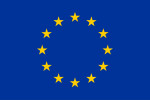Superconducting cables for sustainable energy transition (SCARLET)
Duration
Rising amounts of renewable energy coupled with an increase in decentralised power generation call for the modernisation and extension of the European grids. Recent studies have shown that European transmission corridors with lengths of several hundred kilometres and capacities of 5 to 20 GW are needed. The EU project SCARLET (acronym for "Superconducting cables for sustainable energy transition") unites 15 partners from 7 countries around the goal of designing and industrially manufacturing superconducting cables in kilometric lengths. The promise of superconducting cables lies in their high efficiency, compact size, and reduced environmental impact, which could help to overcome challenges posed by overhead lines and conventional cables.
The 1 GW cable systems developed in SCARLET will be brought all the way to the type test, the last qualification step before a commercial installation. An entire work package will be dedicated to offshore superconducting links with innovative offshore cooling systems. This work package is especially relevant to current European activities on offshore technology. Another work package is focussed on hydrogen-cooled superconducting cables, which open up the unique possibility of simultaneously transporting both hydrogen and electricity.
Towards the superconducting standard of the future
Beyond the interdisciplinary work inherent to such a complex project, there is also the intention to involve relevant practitioners at an early stage. Their needs and perspectives as well as practical knowledge will be integrated into the project through the establishment of an Advisory Group. This will ensure that the developed technologies are relevant to a broad spectrum of end users. Moreover, the testing experience gathered in SCARLET will contribute to the development of a first set of recommendations for the HVDC superconducting standard of the future. To this end, a working group will be established, for instance within the framework of the International Council on Large Electric Systems (CIGRÉ), with a focus on testing high-power superconducting cables. Ideally, the recommendations and testing protocols proposed by the working group will be applied and verified in SCARLET. At the end of the project, the results will be forwarded to the IEC, the international organization that prepares and publishes standards for all electrical technologies.
Within SCARLET, the RIFS will be leading the work package on "Dissemination and exploitation", which includes classic dissemination activities such as media reports, information events, policy recommendations for public authorities, etc. The activities related to stakeholder integration (Advisory Group) and standardization are also part of this work package.
This project has received funding from the European Union's Horizon Europe research and innovation programme under grant agreement No. 101075602.
Read more about SCARLET




